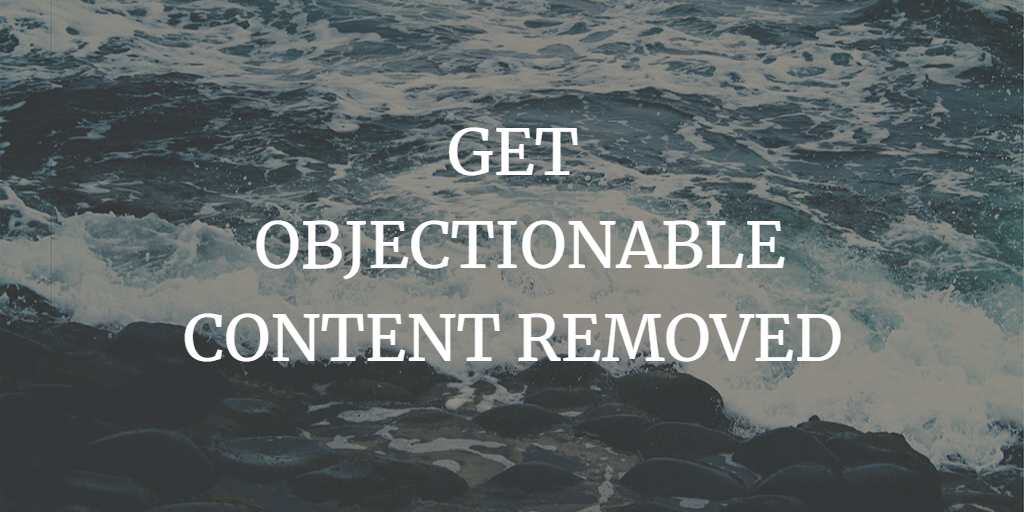LEGAL REMEDIES TO GET OBJECTIONABLE CONTENT REMOVED FROM THE INTERNET

In the digital age, objectionable content on the internet can have a significant impact on individuals and businesses alike. Fortunately, there are legal remedies available to help remove such content. In this blog post, we'll explore the various options, the process involved, and your rights in these situations.
Table of Contents
Understanding Objectionable Content
Legal Remedies for Removing Content
The Process of Content Removal
How to Protect Yourself Online
Conclusion and Additional Resources
1. Understanding Objectionable Content
Objectionable content refers to any material that is offensive, harmful, or defamatory in nature. Examples include:
Cyberbullying or harassment
Defamatory statements
Invasion of privacy
Copyright infringement
Explicit or inappropriate images
2. Legal Remedies for Removing Content
If you find objectionable content online that affects you, there are several legal remedies available, including:
Cease and desist letters: A formal notice demanding the content creator or website owner to remove the offensive material.
Takedown notices: Under the Digital Millennium Copyright Act (DMCA), if copyrighted material is used without permission, you can send a takedown notice to the hosting platform or service provider.
Court orders: If the content creator or website owner refuses to remove the content, you may seek a court order requiring them to do so.
3. The Process of Content Removal
Follow these steps to remove objectionable content from the internet:
Identify the content and its creator: Locate the specific content causing harm and identify the person or entity responsible for posting it.
Gather evidence: Document the objectionable content by taking screenshots or downloading copies for use as evidence in legal proceedings.
Contact the content creator or website owner: Request the removal of the content directly from the person or entity responsible.
Pursue legal remedies: If the content is not removed voluntarily, seek legal assistance to pursue the appropriate legal remedies mentioned above.
Monitor the situation: Keep an eye on the situation to ensure that the content remains removed and take further action if necessary.
4. How to Protect Yourself Online
To reduce the risk of being affected by objectionable content online, consider the following precautions:
Be cautious about the information you share online
Set privacy settings on social media to limit who can see your content
Regularly search for your name or business to monitor for negative content
Act quickly when you find objectionable content affecting you
5. Conclusion and Additional Resources
Removing objectionable content from the internet can be a challenging process. By understanding your legal remedies and acting quickly, you can protect yourself and your reputation. For additional guidance and resources, consider consulting with an attorney specializing in internet law or exploring the following resources:
6. Handling Content on Social Media Platforms
Many social media platforms have their own policies and procedures for handling objectionable content. Familiarize yourself with these guidelines and report any violations directly to the platform:
Facebook Community Standards
Twitter Rules and Policies
Instagram Community Guidelines
LinkedIn Professional Community Policies
7. Understanding the Limits of Content Removal
While the legal remedies discussed in this blog post can be effective in many cases, it's essential to understand that removing content from the internet is not always possible or guaranteed. Some factors that may complicate content removal include:
The content creator or website owner may be located in a different jurisdiction with different laws
The content may have already been shared or copied to other websites
The hosting platform or service provider may not be cooperative or responsive
In such cases, consider alternative strategies to minimize the impact of the objectionable content, such as:
Publishing positive content to help push negative content down in search engine results
Addressing the issue publicly and providing accurate information to counteract any false claims
Seeking legal remedies for damages caused by the objectionable content
8. Conclusion
Dealing with objectionable content on the internet can be a daunting task. However, by understanding the legal remedies available and taking appropriate action, you can mitigate the impact of such content on your personal or professional reputation. Stay vigilant, protect your information, and don't hesitate to seek legal assistance if necessary.


